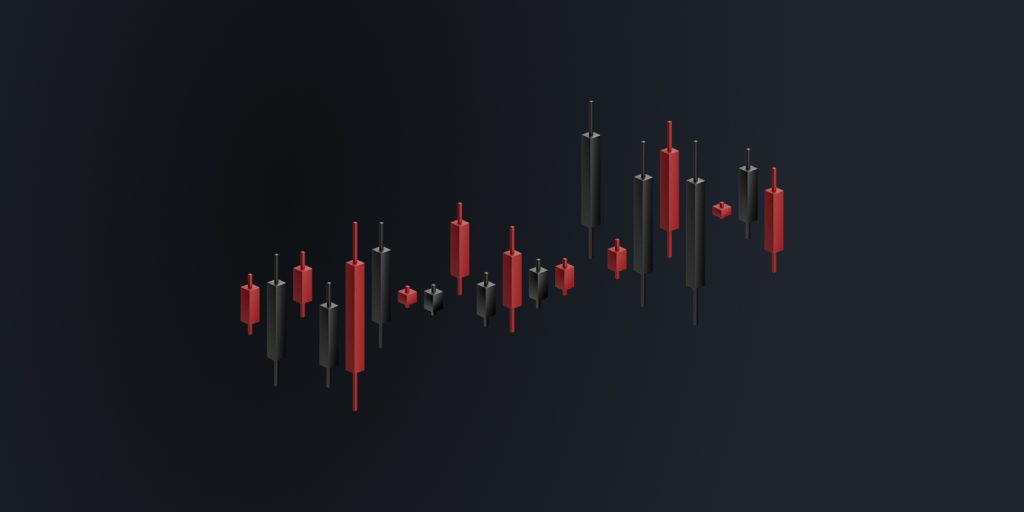
Chiến lược giao dịch chứng khoán tốt nhất: Hướng dẫn chuyên nghiệp toàn diện
Mục lục
Trải qua quá trình giao dịch chứng khoán phức tạp tưởng chừng như rất khó khăn, nhưng với những chiến lược đúng đắn, bạn hoàn toàn có thể khai phá tiềm năng sinh lời ổn định. Trong cuốn sách hướng dẫn toàn diện này, chúng tôi sẽ hướng dẫn bạn từng bước qua bốn chiến lược giao dịch chứng khoán tốt nhất – phân tích cơ bản, phân tích kỹ thuật, giao dịch lướt sóng và giao dịch trong ngày – cung cấp cho bạn kiến thức và công cụ cần thiết để đưa ra quyết định sáng suốt và đạt được mục tiêu tài chính.
Hiểu rõ bản chất của mọi kỹ thuật giao dịch là điều mà bất kỳ nhà giao dịch mới nào cũng cần, vì không có câu trả lời duy nhất. Dù bạn là nhà đầu tư giàu kinh nghiệm hay người mới bắt đầu, điều quan trọng là tìm hiểu và nắm rõ các kỹ thuật khác nhau, sau đó điều chỉnh chúng cho phù hợp với nhu cầu, khả năng chịu rủi ro và phong cách giao dịch cá nhân của bạn.
Chiến lược giao dịch chứng khoán tốt nhất
1. Giao dịch trong ngày
Giao dịch trong ngày bao gồm việc mua và bán cổ phiếu trong cùng một ngày giao dịch để tận dụng biến động giá ngắn hạn. Các nhà giao dịch dựa vào phân tích kỹ thuật, biểu đồ thời gian thực và khả năng thực hiện lệnh nhanh để kiếm lời từ những biến động trong ngày.
Các tính năng chính của giao dịch trong ngày
- Cần theo dõi thị trường liên tục và đưa ra quyết định nhanh chóng.
- Rủi ro cao do đòn bẩy và biến động thị trường.
- Lợi nhuận đến từ những khoản lãi nhỏ, thường xuyên thay vì nắm giữ lâu dài.
- Thông thường sử dụng tài khoản ký quỹ để tăng sức mua.
Kỹ thuật tốt nhất cho giao dịch trong ngày
- Đầu cơ: Khai thác các khoảng cách giá nhỏ do chênh lệch giá mua-bán, thường giữ vị thế trong vài giây đến vài phút.
- Giao dịch theo đà: Cổ phiếu có xu hướng tăng hoặc giảm mạnh dựa trên khối lượng và hành động giá.
- Giao dịch đột phá: Bắt đầu giao dịch khi giá vượt qua mức kháng cự hoặc hỗ trợ quan trọng với khối lượng tăng.
- Giao dịch dựa trên tin tức: Tận dụng báo cáo thu nhập, dữ liệu kinh tế hoặc các sự kiện địa chính trị để có những động thái nhanh chóng.
Ưu điểm của giao dịch trong ngày
- Tiềm năng sinh lời nhanh chóng chỉ sau một phiên giao dịch.
- Không có rủi ro qua đêm vì tất cả các vị thế đều được đóng khi thị trường đóng cửa.
- Có hiệu quả trong cả thị trường tăng giá và giảm giá.
- Tính thanh khoản cao của các cổ phiếu lớn và ETF.
Nhược điểm của giao dịch trong ngày
- Căng thẳng và áp lực về mặt cảm xúc cao.
- Cần có số vốn đáng kể để đáp ứng các quy tắc giao dịch theo ngày (tối thiểu 25.000 đô la tại Hoa Kỳ).
- Chi phí hoa hồng cao có thể làm giảm lợi nhuận.
- Đòi hỏi kỷ luật nghiêm ngặt và quản lý rủi ro.
2. Giao dịch lướt sóng
Giao dịch lướt sóng nắm giữ cổ phiếu trong vài ngày hoặc vài tuần để hưởng lợi từ các biến động tăng hoặc giảm dự kiến. Nó cân bằng giữa giao dịch ngắn hạn và đầu tư dài hạn.
Các tính năng chính của giao dịch Swing
- Ít tốn thời gian hơn giao dịch trong ngày nhưng vẫn cần phân tích thường xuyên.
- Sử dụng cả phân tích kỹ thuật và cơ bản để xác định cơ hội.
- Nhắm mục tiêu vào xu hướng trung hạn thay vì nhiễu trong ngày.
Kỹ thuật tốt nhất cho giao dịch Swing
- Đường trung bình động: Sử dụng đường trung bình động 50 ngày hoặc 200 ngày để xác nhận xu hướng.
- Đường thoái lui Fibonacci: Xác định mức đảo ngược tiềm năng sau một đợt biến động giá mạnh.
- Chỉ số sức mạnh tương đối (RSI): Phát hiện điều kiện mua quá mức (>70) hoặc bán quá mức (<30) để có tín hiệu vào/ra.
- Các mẫu nến: Nhận biết các mô hình như búa, mô hình nhấn chìm hoặc doji để đảo ngược xu hướng.
Ưu điểm của giao dịch Swing
- Linh hoạt hơn giao dịch trong ngày; không cần phải dành thời gian liên tục trên màn hình.
- Nắm bắt được những biến động giá lớn hơn so với lướt sóng.
- Chi phí giao dịch thấp hơn so với giao dịch trong ngày thường xuyên.
Nhược điểm của giao dịch Swing
- Rủi ro qua đêm và cuối tuần (khoảng cách do tin tức).
- Cần phải kiên nhẫn chờ đợi để thiết lập.
- Có thể chịu tổn thất trong thị trường biến động, đi ngang.
3. Giao dịch theo vị thế
Giao dịch theo vị thế là chiến lược dài hạn, trong đó các nhà giao dịch nắm giữ cổ phiếu trong nhiều tháng hoặc nhiều năm dựa trên xu hướng kinh tế vĩ mô và cơ bản.
Các tính năng chính của giao dịch vị thế
- Tập trung vào chu kỳ kinh tế dài hạn thay vì nhiễu ngắn hạn.
- Chi phí giao dịch thấp hơn do ít giao dịch hơn.
- Yêu cầu phân tích cơ bản mạnh mẽ (thu nhập, xu hướng ngành, chất lượng quản lý).
Kỹ thuật tốt nhất cho giao dịch theo vị thế
- Đầu tư giá trị: Mua cổ phiếu bị định giá thấp nhưng có nền tảng cơ bản vững chắc (ví dụ: P/E thấp, cổ tức cao).
- Đầu tư tăng trưởng: Nhắm mục tiêu đến các công ty có tiềm năng tăng trưởng doanh thu/lợi nhuận cao.
- Đầu tư cổ tức: Tập trung vào các cổ phiếu có cổ tức ổn định, lợi nhuận cao để tạo thu nhập thụ động.
- Sự luân chuyển của ngành: Chuyển dịch đầu tư giữa các ngành dựa trên chu kỳ kinh tế.
Ưu điểm của giao dịch theo vị thế
- Ít tốn thời gian hơn so với giao dịch chủ động.
- Đòn bẩy gộp lại theo thời gian.
- Giảm căng thẳng và đưa ra ít quyết định dựa trên cảm xúc hơn.
Nhược điểm của giao dịch theo vị thế
- Cần kiên nhẫn; việc trả lại có thể mất nhiều năm.
- Tiếp xúc với rủi ro thị trường dài hạn (suy thoái, sự kiện địa chính trị).
- Có thể xảy ra tình trạng sụt giảm lớn trong thị trường giá xuống.
4. Đầu cơ
Giao dịch lướt sóng là thực hiện hàng chục hoặc hàng trăm giao dịch mỗi ngày để kiếm lời từ những thay đổi nhỏ về giá.
Các tính năng chính của Scalping
- Thời gian giữ cực kỳ ngắn (tính bằng giây đến vài phút).
- Dựa vào tính thanh khoản cao và chênh lệch giá mua-bán hẹp.
- Yêu cầu các công cụ thực hiện tiên tiến (tiếp cận thị trường trực tiếp, báo giá Cấp độ II).
Kỹ thuật tốt nhất để Scalping
- Trích dẫn cấp độ II: Phân tích luồng lệnh để xác định thanh khoản và động lượng.
- Dữ liệu thời gian và doanh số: Theo dõi khối lượng giao dịch theo thời gian thực để biết tín hiệu vào/ra.
- Đọc băng: Giải thích diễn biến giá và khối lượng giao dịch tăng đột biến để có những biến động nhanh chóng.
Ưu điểm của Scalping
- Những thành quả nhỏ thường xuyên sẽ tích tụ theo thời gian.
- Rủi ro qua đêm tối thiểu.
- Hoạt động trong thị trường có mức biến động thấp.
Nhược điểm của Scalping
- Chi phí hoa hồng cao có thể làm giảm lợi nhuận.
- Yêu cầu sự tập trung cao độ và phản xạ nhanh.
- Căng thẳng và mệt mỏi về mặt tinh thần.
5. Giao dịch thuật toán
Giao dịch thuật toán sử dụng hệ thống tự động để thực hiện giao dịch dựa trên các quy tắc được xác định trước.
Các tính năng chính của giao dịch thuật toán
- Loại bỏ việc đưa ra quyết định dựa trên cảm xúc.
- Yêu cầu có kiến thức lập trình (Python, QuantConnect) hoặc phần mềm giao dịch.
- Kiểm tra ngược tối ưu hóa các chiến lược trước khi thực hiện trực tiếp.
Kỹ thuật tốt nhất cho giao dịch thuật toán
- Sự trở lại trung bình: Giá cá cược sẽ trở lại mức trung bình lịch sử.
- Trọng tài: Khai thác sự chênh lệch giá giữa các thị trường hoặc sàn giao dịch.
- Giao dịch tần suất cao (HFT): Thực hiện hàng nghìn lệnh mỗi giây để kiếm được lợi nhuận nhỏ.
Ưu điểm của giao dịch thuật toán
- Tốc độ, độ chính xác và hiệu quả khi thực hiện.
- Loại bỏ thành kiến và cảm xúc của con người.
- Nó có thể xử lý khối lượng dữ liệu khổng lồ ngay lập tức.
Nhược điểm của giao dịch thuật toán
- Chi phí thiết lập cao (nguồn cấp dữ liệu, máy chủ, phần mềm).
- Yêu cầu chuyên môn về lập trình và tài chính.
- Rủi ro quá khớp trong quá trình kiểm thử ngược.
6. Đầu tư ngược dòng
Đầu tư ngược dòng là đi ngược lại xu hướng thị trường hiện hành—mua khi người khác hoảng loạn và bán khi hưng phấn.
Các đặc điểm chính của đầu tư ngược dòng
- Yêu cầu niềm tin mạnh mẽ và nghiên cứu độc lập.
- Thường nhắm mục tiêu vào các cổ phiếu bị bán quá mức nhưng có nền tảng cơ bản mạnh.
Kỹ thuật tốt nhất để đầu tư ngược dòng
- Phân tích tâm lý: Đánh giá nỗi sợ hãi tột độ (cơ hội mua) hoặc lòng tham (tín hiệu bán).
- Đánh giá cơ bản: Xác định các cổ phiếu bị định giá thấp bằng các chỉ số như P/E, P/B và dòng tiền tự do.
Ưu điểm của đầu tư ngược dòng
- Tiềm năng lợi nhuận cao từ tài sản định giá sai.
- Có hiệu quả trong thời kỳ thị trường biến động mạnh.
Nhược điểm của đầu tư ngược dòng
- Rủi ro khi tham gia sớm trước khi xu hướng đảo ngược.
- Thử thách tâm lý - đi ngược lại đám đông.
7. Theo dõi xu hướng
Xu hướng theo sau tận dụng các biến động tăng hoặc giảm liên tục của thị trường.
Các tính năng chính của Trend Following
- Triết lý "Xu hướng là bạn của bạn".
- Nó sử dụng đường trung bình động, tín hiệu đột phá và chỉ báo động lượng.
Kỹ thuật tốt nhất để theo dõi xu hướng
- Đường trung bình động giao nhau: Vượt qua mốc 50 ngày trên mốc 200 ngày (Chữ thập vàng).
- Chỉ báo ADX: Xác nhận sức mạnh của xu hướng (ADX >25 cho thấy xu hướng mạnh).
Ưu điểm của việc theo dõi xu hướng
- Hoạt động tốt trong thị trường có xu hướng mạnh.
- Quy tắc đơn giản với tín hiệu vào/ra rõ ràng.
Nhược điểm của việc theo dõi xu hướng
- Bị trễ trong thị trường biến động hoặc đi ngang.
- Có thể bị sụt giảm lớn trong quá trình đảo ngược.
Cách áp dụng hiệu quả các chiến lược giao dịch chứng khoán tốt nhất
Xác định rõ ràng mục tiêu giao dịch và khả năng chịu rủi ro của bạn
Trước khi lựa chọn bất kỳ chiến lược nào, bạn phải thiết lập các mục tiêu tài chính rõ ràng và đánh giá trung thực khả năng chịu rủi ro của mình. Các nhà giao dịch ngắn hạn tìm kiếm lợi nhuận nhanh nên cân nhắc các phương pháp giao dịch trong ngày hoặc đầu cơ lướt sóng. Những phương pháp này đòi hỏi phải theo dõi thị trường liên tục nhưng mang lại cơ hội thường xuyên. Các nhà đầu tư có khung thời gian dài hơn sẽ thấy giao dịch vị thế hoặc đầu tư cổ tức phù hợp hơn, vì những chiến lược này tập trung vào việc tích lũy tài sản dần dần.
Vốn khả dụng của bạn ảnh hưởng đáng kể đến việc lựa chọn chiến lược. Một số phương pháp như giao dịch trong ngày đòi hỏi tài khoản lớn để đáp ứng các yêu cầu pháp lý, nhưng một số phương pháp khác có thể được thực hiện với ít vốn hơn. Trên hết, bạn phải xác định mức độ biến động và khả năng thua lỗ mà bạn có thể chịu đựng về mặt tâm lý. Các nhà giao dịch tích cực có thể xử lý những biến động mạnh của giao dịch theo đà, nhưng các nhà đầu tư bảo thủ nên gắn bó với các khoản đầu tư giá trị ổn định hơn.
Chọn Nền tảng Môi giới Tối ưu
Việc lựa chọn sàn giao dịch ảnh hưởng rất lớn đến khả năng thực hiện chiến lược hiệu quả của bạn. Mỗi phong cách giao dịch đòi hỏi những tính năng nền tảng riêng. Nhà giao dịch trong ngày cần những sàn giao dịch cung cấp tốc độ khớp lệnh nhanh như chớp, các gói biểu đồ tiên tiến và luồng dữ liệu thời gian thực. Nhà giao dịch lướt sóng được hưởng lợi từ các công cụ phân tích kỹ thuật mạnh mẽ và khả năng truy cập di động đáng tin cậy. Nhà giao dịch thuật toán yêu cầu các nền tảng có kết nối API và khả năng kiểm tra ngược.
Cấu trúc hoa hồng rất đa dạng và có thể làm giảm lợi nhuận của các chiến lược giao dịch tần suất cao. Hãy tìm kiếm các nhà môi giới cung cấp mức giá cạnh tranh phù hợp với khối lượng giao dịch của bạn. Ngoài ra, hãy cân nhắc các yêu cầu về ký quỹ, khả năng bán khống và khả năng phản hồi của bộ phận hỗ trợ khách hàng. Nhiều nhà môi giới cung cấp tài khoản demo - hãy tận dụng những tài khoản này để kiểm tra tính phù hợp của nền tảng trước khi đầu tư vốn thật.
Phát triển chuyên môn phân tích
Việc học cả phân tích kỹ thuật lẫn phân tích cơ bản sẽ tạo tiền đề cho việc triển khai chiến lược hiệu quả. Các nhà giao dịch kỹ thuật cần học cách đọc biểu đồ, nhận biết các mô hình và áp dụng các chỉ báo một cách phù hợp. Hãy bắt đầu với các công cụ đơn giản như đường trung bình động để xác định xu hướng và các chỉ báo dao động như RSI để giải mã động lượng. Dần dần, hãy kết hợp các kỹ thuật phức tạp hơn như thoái lui Fibonacci và phân tích khối lượng.
Các nhà phân tích cơ bản cần học cách phân tích báo cáo tài chính, đọc xu hướng kinh tế và phân tích ngành. Học cách đo lường sức khỏe của một công ty thông qua các thông số như tỷ lệ P/E, nợ và báo cáo lưu chuyển tiền tệ. Tìm hiểu cách các yếu tố kinh tế vĩ mô ảnh hưởng đến các lĩnh vực khác nhau. Các nhà giao dịch thành công nhất tổng hợp cả hai phương pháp phân tích để có được cái nhìn toàn diện về thị trường.
Kiểm tra Chiến lược Thông qua Giao dịch Giấy
Trước khi mạo hiểm vốn thực tế, hãy kiểm tra kỹ lưỡng chiến lược bạn đã chọn trong môi trường giao dịch mô phỏng. Tài khoản demo cho phép bạn thực hành thực hiện, tinh chỉnh tiêu chí vào/ra và xác định điểm yếu tiềm ẩn mà không gây hậu quả tài chính. Duy trì thói quen này cho đến khi bạn đạt được lợi nhuận mô phỏng ổn định - thường là ít nhất một đến ba tháng hiệu suất ổn định.
Hãy coi trọng giao dịch giấy tờ như giao dịch thực tế bằng cách tuân thủ tất cả các thông số rủi ro đã được lên kế hoạch. Ghi chép lại lý do và kết quả của mỗi giao dịch mô phỏng. Quá trình này giúp phát triển tính kỷ luật cần thiết cho điều kiện thị trường thực tế, đồng thời chỉ ra những điều chỉnh cần thiết cho phương pháp của bạn. Nhiều nhà giao dịch thất bại vì họ chuyển sang giao dịch thực tế trước khi xác thực đầy đủ chiến lược của mình.
Thực hiện các giao thức quản lý rủi ro nghiêm ngặt
Kiểm soát rủi ro hiệu quả giúp phân biệt nhà giao dịch có lợi nhuận với nhà giao dịch thất bại. Xác định quy mô vị thế phù hợp - hầu hết các chuyên gia chỉ mạo hiểm không quá 1-2% vốn cho mỗi giao dịch. Thiết lập các quy tắc dừng lỗ rõ ràng dựa trên mức giảm phần trăm hoặc mức kỹ thuật. Điều quan trọng không kém là xác định chiến lược chốt lời, dù là thông qua mục tiêu cố định hay lệnh dừng lỗ.
Kỷ luật tâm lý đóng vai trò then chốt trong việc duy trì các thông số rủi ro. Tránh xa sự cám dỗ của việc vượt lệnh dừng lỗ khi đang thua lỗ hoặc theo đuổi các vị thế vượt quá giới hạn quy mô đã định. Việc áp dụng nhất quán các quy tắc quản lý vốn sẽ bảo vệ vốn trong những giai đoạn sụt giảm không thể tránh khỏi. Hãy nhớ rằng việc bảo toàn vốn giao dịch cho phép bạn tham gia vào các cơ hội trong tương lai.
Duy trì hồ sơ giao dịch chi tiết
Nhật ký giao dịch toàn diện cung cấp những thông tin vô giá về hiệu suất. Ghi lại mọi giao dịch, bao gồm giá vào/ra, quy mô vị thế và lý do đằng sau mỗi quyết định. Ghi nhận điều kiện thị trường và trạng thái cảm xúc trong suốt quá trình giao dịch. Theo thời gian, các mô hình sẽ xuất hiện, cho thấy chiến lược nào hiệu quả nhất trong các môi trường khác nhau.
Việc thường xuyên xem xét nhật ký giao dịch có thể giúp xác định điểm mạnh cần phát huy và điểm yếu cần khắc phục. Việc đo lường định lượng các số liệu thống kê như tỷ lệ thắng, lãi/lỗ trung bình và mức giảm tối đa mang lại những đánh giá khách quan về hiệu suất. Phân tích dựa trên dữ liệu cho phép liên tục tinh chỉnh chiến lược dựa trên hiệu suất thực tế thay vì ý kiến chủ quan.
Rèn luyện tính kỷ luật về mặt cảm xúc
Tâm lý giao dịch thường quyết định thành công lâu dài hơn là lựa chọn chiến lược. Những cạm bẫy cảm xúc điển hình bao gồm giao dịch trả thù khi thua lỗ, đòn bẩy quá mức khi thắng và đóng vị thế sớm. Hãy xây dựng thói quen khách quan, chẳng hạn như các buổi khởi động trước giờ mở cửa và phân tích sau giờ mở cửa.
Áp dụng các biện pháp bảo vệ chống lại việc ra quyết định dựa trên cảm xúc. Đặt giới hạn thua lỗ hàng ngày để kích hoạt các lệnh tạm dừng giao dịch bắt buộc. Tránh thực hiện các giao dịch bốc đồng ngoài chiến lược đã định sẵn. Nhiều nhà giao dịch thành công sử dụng danh sách kiểm tra để đảm bảo mỗi giao dịch đáp ứng tất cả các tiêu chí đã thiết lập trước khi thực hiện. Việc xây dựng khả năng phục hồi cảm xúc cần thời gian nhưng lại rất cần thiết cho hiệu suất ổn định.
Cam kết học tập liên tục
Thị trường tài chính liên tục biến đổi, đòi hỏi sự học hỏi không ngừng. Hãy cập nhật thông tin về các kỹ thuật phân tích mới, những thay đổi về quy định và diễn biến kinh tế vĩ mô. Nghiên cứu lịch sử thị trường để hiểu cách các chiến lược khác nhau hoạt động qua các chu kỳ khác nhau. Hãy theo dõi các nhà giao dịch và nhà phân tích uy tín, đồng thời duy trì thái độ hoài nghi lành mạnh về những lời quảng cáo "làm giàu nhanh chóng".
Dành thời gian thường xuyên để phát triển kỹ năng thông qua các khóa học uy tín, sách hướng dẫn giao dịch và nghiên cứu thị trường. Đặc biệt tập trung vào những giai đoạn giao dịch kém hiệu quả, coi đó là cơ hội học hỏi thay vì lý do nản lòng. Những nhà giao dịch thành công nhất tự coi mình là những người học hỏi không ngừng nghỉ trên thị trường.
Phần kết luận
Việc lựa chọn chiến lược giao dịch chứng khoán phù hợp phụ thuộc vào khả năng chịu rủi ro, thời gian rảnh rỗi và kiến thức thị trường của bạn. Dù bạn thích giao dịch trong ngày, giao dịch lướt sóng hay đầu tư dài hạn, kỷ luật và học hỏi liên tục là chìa khóa thành công. Hãy thử nghiệm các chiến lược trên tài khoản demo trước khi đầu tư vốn thật.
FAQ
Không có chiến lược nào là "tốt nhất" cả—nó phụ thuộc vào mục tiêu, khả năng chịu rủi ro và thời gian cam kết của bạn. Người mới bắt đầu thường thành công với giao dịch lướt sóng (giữ lệnh 2-10 ngày) hoặc đầu tư dài hạn.
Hướng dẫn quản lý rủi ro giúp ngăn ngừa tổn thất thảm khốc. - Mức lỗ tối đa 3% cho mỗi giao dịch - Mức lỗ tối đa 5% cho mỗi ngày - Mức lỗ tối đa 7% cho mỗi tuần
Giao dịch trong ngày không phải là cờ bạc nếu bạn sử dụng một chiến lược đã được chứng minh, quản lý rủi ro và kỷ luật. Đây là một hoạt động dựa trên kỹ năng. Tuy nhiên, nếu không có quy tắc phù hợp, nó có thể trở thành cờ bạc do những quyết định cảm tính và những lần đặt cược liều lĩnh.
Đã cập nhật:
1 tháng 4, 2025



